Deep Dive: Should the Canucks Re-Sign Erik Gudbranson?
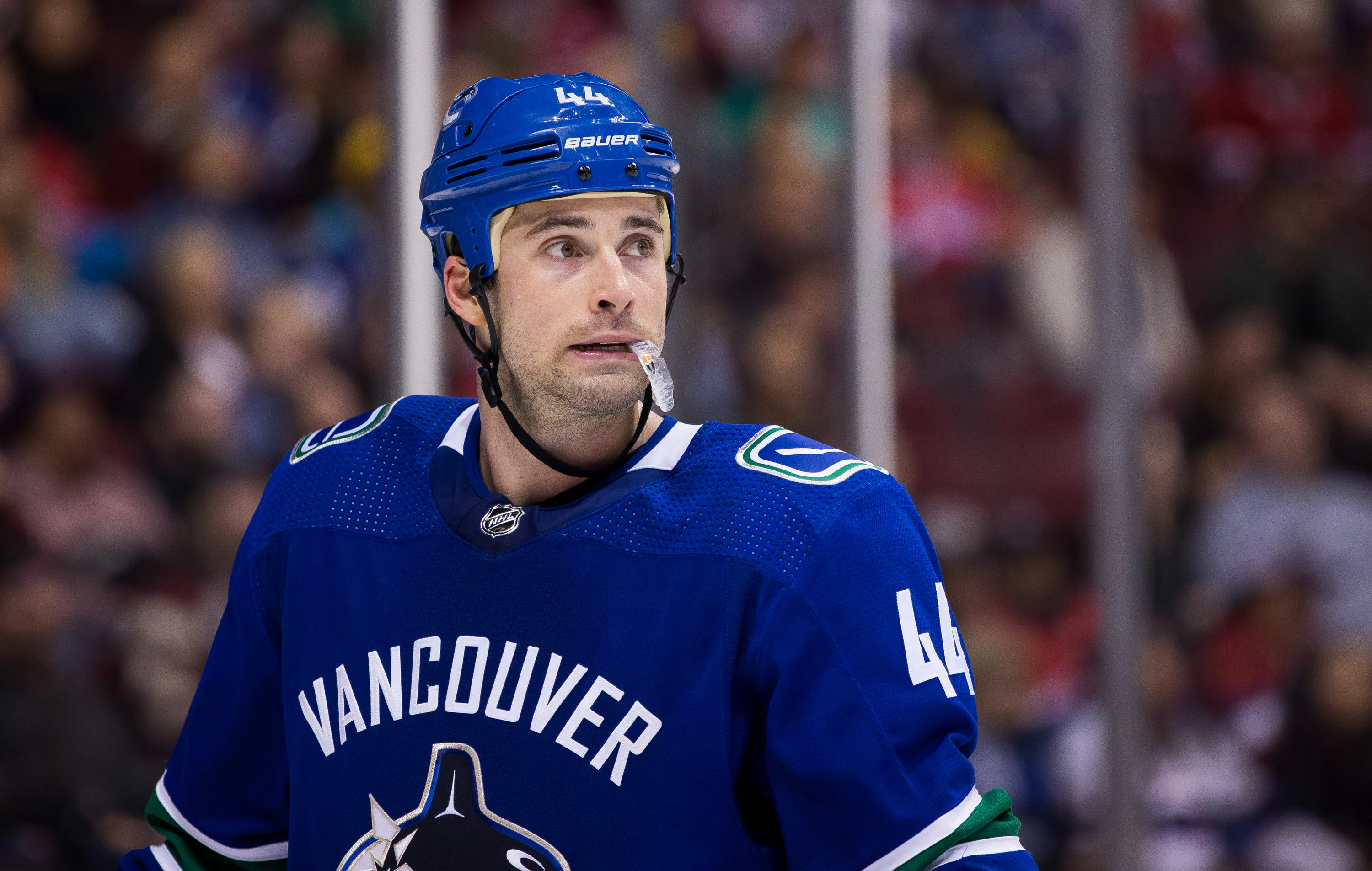
6 years ago
For most of the season, fans have assumed that Erik Gudbranson would be trade bait at this year’s deadline; but reports surfaced earlier this week indicating that may not be the case. In fact, comments made by Jim Benning would seem to suggest that the team’s number one priority is re-signing the divisive defenceman:
He’s a physical, stay-at-home defenceman who helps us, We have other defencemen who are more puck-moving guys, but we don’t have anyone else with Gudbranson’s style of play.“I know he’s had some ups and downs, but until he got hurt he was playing well for us. As long as a player can play in today’s game, you’re always going to need a defencemen who can play physical, especially in our division. There’s always going to be room for a guy like that in your top six.”
It’s entirely possible that these comments are merely posturing, but it’s worth exploring whether or not re-signing Gudbranson is a good idea.
The Numbers

It really can’t be overstated how difficult it is to make a statistical case that paints Gudbranson in a positive light. There are few regular NHL defenders since Gudbranson entered the league that have posted worse underlying shot metrics. We’re talking bottom-20 in almost every category among defenders with over 4000 minutes since his inaugural season. Over six seasons, Gudbranson has only posted a shot share above 50% once, and he’s been trending downward since 2013.

Adjusting for the score, venue, excluding blocked shots, and accounting for competition did nothing to improve his numbers or provide anything in the way of absolution. I know this is well-trodden ground by this point, but there just isn’t any statistic that shines a positive light on Gudbranson.
Hits aren’t a particularly useful stat, but you’d expect a player with Gudbranson to at least rack up a lot of them. But his 2.4 per game don’t even lead a Canucks team that’s consistently described as soft. Alex Biega and Michael Del Zotto have more per game at 3.3 and 2.7 respectively, and Alex Edler is only slightly behind at 2.2. I’m not one to put much stock in laying hits, but it seems curious to me that a big, mean, tough defender should be contributing physically at roughly the same level as Edler.
Even if you’re a crank who thinks that defenders with extremely poor shot metrics can still end up with positive goal-differential by affecting their goalie’s save percentage, Gudbranson still doesn’t pass the sniff test. He’s carried a career goals-for percentage of just under 43%, without consistently facing fierce competition.
Now obviously, if you try hard enough, you could try to defend these numbers. They weren’t great in Florida and have absolutely plummeted since coming to Vancouver, but maybe he just hasn’t been a fit. Perhaps he’s been saddled with partners that don’t work in a system that doesn’t allow him to play his game. But even if that’s the case, he’s 26, and it’s his job to prove he can be effective. He hasn’t. It’s generally not advisable to sign a player who has never shown he can be solvent at even strength, and at any rate if you find yourself consistently having to twist yourself into knots trying to defend a player you might just have to step back and consider that he isn’t that good.
The Market for Gudbranson and Other Options
Rumours have abounded since Gudbranson was traded that he’d be looking to sign a deal with an AAV in excess of five million dollars. The market for his services has likely shrunk a bit since then; but he’s still making three and a half million this season, and is likely due for a raise if only a minor one.
Let’s entertain the notion that Gudbranson’s toughness is an invaluable commodity and one that the Canucks absolutely cannot live without. Even through this lens, re-upping on Gudbranson doesn’t make much sense. Anthony Peluso, Brandon Bollig, Tanner Glass, Colton Sceviour, and Antoine Roussel are just a few of the forwards on the market this summer that can throw hands and provide a bit of snarl for cheaper than the price Gudbranson is likely to command. On the whole, I don’t have a ton of positive things to say about what they provide, but they can be had on one-year deals at bargain-basement prices. Better yet, they don’t take up a spot in your top six D, and their lower reputation allows them to be rotated in and out of the lineup on a game-to-game basis.
Maybe the suggestion makes you scoff. Maybe you’re like Dave Tomlinson, and you believe that Erik Gudbranson’s status as a right-shot defender is what makes him untouchable on a roster that’s lacking in that department. Big, gritty, right-shot defenders don’t grow on trees, and they don’t come cheap, either.
I mean, unless you’re Roman Polak, Andrej Sustr, Dalton Prout, or Luke Schenn. Again, these aren’t players I would sign, but if you really feel like you need a Gudbranson-type in the lineup, you can get it for cheaper. You might as well expedite Gudbranson’s development process and sign Schenn, since they’re essentially the same player, give or take a couple years. Schenn even has similar draft pedigree.

Okay, so maybe you’re still not convinced. It’s not just about the snarl, or the right-handed shot. It’s just that Gudbranson’s such a darn good guy. Even as someone who’s been extremely critical not only of Gudbranson but hockey’s conception of “character”, I’ll admit that Gudbranson’s reviews as a human being are impeccable. Surely there isn’t another defenseman that could be had next year that ticks all the boxes Gudbranson does. Right-handed defenders? Sure, you can find a few. Toughness? If not on the waiver wire, then certainly in free agency. But it must be almost impossible to find a player who’s available next year who’s right-handed, tough as nails, and a good person…
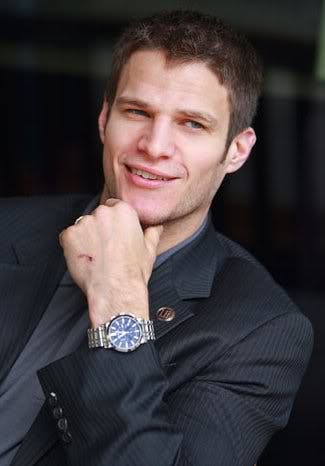
Oh hey there.
Look, I’m not saying the Canucks should fall over themselves to sign Kevin Bieksa this summer. Far from it, in fact. What I’m saying is, if you absolutely have to have a snarly right-handed defenseman who can throw hands and be a good locker-room presence on your roster, why not go with someone who’s cheaper, will command shorter term, and is more well-liked in the community. Most fans were happy when the trade was made, but come on, tell me you weren’t at least a little disappointed when you had to give up on the idea of Juice retiring in a Canucks uniform.
Trade Value and the Great Gudbranson Lie
There’s also the question of value. At 26, Gudbranson is likely to be past his prime by the time the team is ready to compete again. What they get in return for him is another story.
The Canucks aren’t getting back what they gave up, but there have been rumblings that they could still get significant assets in return. There’s at least one person who believes Gudbranson could even fetch a first round pick. That’s what Renaud Lavoie speculated yesterday. His other suggestion of a second plus a prospect is probably more realistic, but that’s still a decent haul given the track record this regime has with second-round picks.
It’s important to consider because getting anything at all in return for Gudbranson should be viewed as a win, and the reason for that is that he hasn’t played as advertised since his arrival in Vancouver. Gudbranson’s biggest defenders will hand-wave shot metrics because they think his job merely consists of clearing the crease and keeping opponents out of the high-danger areas.
First of all, it’s a narrow-minded way of looking at the position. Even a positionally sound defensive stalwart will have a net negative impact on his team if he can’t move the puck. Even with all the time and space in the world, Gudbranson is notoriously easy to pressure.

Additionally, if clearing the front of the net his job, he’s not particularly good at it:
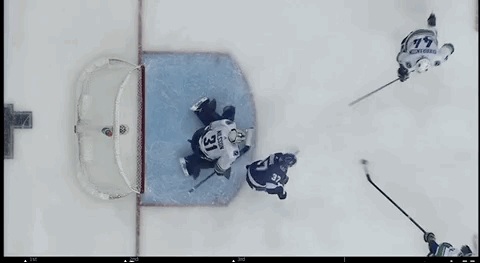
The Lightning player in this gif is a 5-foot-9 rookie named Yanni Gourde. Gourde’s having a storybook season, but he’s the type of player that Gudbranson is supposed to be able to knock over with one hand. Better defenders use their size and physicality to take away time and space from players like him.
This isn’t an isolated incident. Gudbranson routinely cedes the territory directly in front of his goaltender. His struggles with lateral movement often allow opponents to skate around him. To utilize physicality effectively against skilled players, you have to be able to shift quickly enough to catch them. Players that can turn on a dime can do this effectively, but it’s an area where Gudbranson always seems to be a step behind.
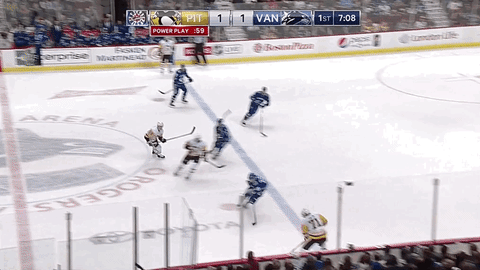
Another field you’d expect a physical defensive defenceman to excel in is keeping shots to the outside; but again, Gudbranson’s lateral movement presents some difficulties. By the time he’s able to turn to face the Penguins forward, he’s a step ahead of Gudbranson.
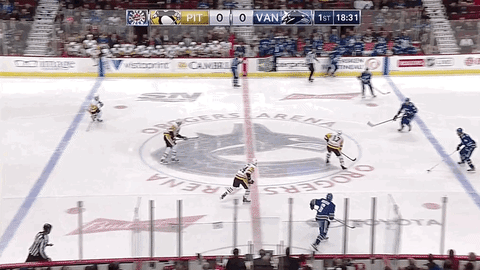
This is the great lie about Gudbranson: that the physical element he brings to his game is something that the Canucks simply can’t replace. But the reality is that the deficiencies in his game are keeping him from being able to harness that physicality in a way that tangibly effects the on-ice results. Gudbranson could be the toughest player in the game; (and frankly, I’m not convinced he’s even ranked,) but if it only comes into play between the whistles, then it doesn’t really matter. That’s part of the reason you see two other Canucks defenders outranking him in the hit department.
Conclusion
There are probably going to be six-to-ten defenders on the market this summer that can replace Gudbranson for a fraction of the price he’s going to command. He doesn’t bring anything especially unique to the table, and carries trade value that far exceeds his on-ice contributions.
This one should be a no-brainer.





